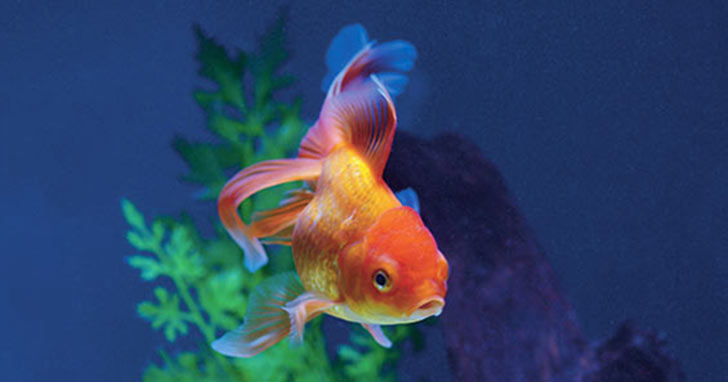
Ammonia is perhaps the most common and toxic aquarium pollutant. While it is fairly easy to manage, sudden surges in ammonia levels often remain unnoticed until aquarium inhabitants show signs of distress. Learn what you can do to prevent unexpected ammonia emergencies.
Be Aware of Ammonia
For many hobbyists, ammonia concerns are highest when setting up new aquariums. Systems going through the cycling process are carefully tested to monitor ammonia levels. However, once the aquarium has cycled properly, diligent monitoring of ammonia levels wanes as confidence in a stable system increases. Established aquariums with efficient biological filtration will not have measurable ammonia present in the system. And here lies the greatest misconception regarding ammonia: even if ammonia levels are undetectable, it does not mean there is no ammonia present in the system.
Ammonia and Biological Filtration
Ammonia is continuously introduced into your aquarium through decomposing organic materials, fish waste, and natural biological processes. If there is a source of organic matter, then ammonia will be present in your aquarium. Fortunately, biological filtration rapidly converts ammonia into less harmful compounds. Ammonia levels remain undetectable as long as biological filtration is functioning properly in the aquarium.
Factors that Compromise Biological Filtration
In general, biological filtration in established aquariums remains stable. However, there are certain factors that momentarily compromise biological filtration. As a result, ammonia levels can surge. This dramatic and toxic increase in aquarium ammonia level is commonly referred to as an ammonia spike. Common causes include:
| OVERFEEDING - Excess or uneaten food is arguably the most common cause of potential ammonia spikes. Depending on the type and amount of food, the additional organic material can test the limits of the waste-processing capability of your system's biological filtration. When the amount of organic material exceeds the aquarium's ability to process it, then ammonia levels can increase to toxic levels.
REMEDY - Avoid the "one big meal" method of feeding. Feed your aquarium inhabitants small meals spread throughout the course of the day. The food portion they receive should be completely consumed within a few minutes. Promptly remove any uneaten food. The best way to ensure precise, scheduled feeding is through the use of an automatic fish feeder.
|
| OVERSTOCKING - A sudden increase in the biological load (the total number of fish in the aquarium as well as the metabolic waste of all organisms it contains) can also trigger an ammonia spike. As you add more fish to your aquarium or as your fish grow in size, they produce more waste. If your filter is unable to keep up with your aquarium's fish load, you may experience frequent ammonia spikes.
REMEDY - Learn as much as you can about the fish you are interested in before adding them to your aquarium. Anticipate growth and make sure your existing aquarium and filtration system are capable of accommodating new additions. Keep in mind that fish with greater mass, such as cichlids and goldfish will require more efficient 3-stage filtration than fish of lesser mass require. Also, stock aquariums lightly to ensure healthy and stable systems.
|
| MEDICATION - Many medications are biocides designed to kill harmful, disease-causing organisms. While beneficial bacteria responsible for biological filtration may not be the targets, certain medications can still wipe them out.
REMEDY - Before any treatment regimen, read and follow the manufacturer's instructions on all medications. Whenever possible, remove the infected fish and treat it in a quarantine or hospital tank. This precaution helps prevent any unwanted results in your main display aquarium.
|
| OVER CLEANING - While it may seem counter-intuitive, over-cleaning an aquarium can create an unstable aquarium environment. Very large water changes, in conjunction with aggressive gravel cleaning can significantly reduce populations of beneficial bacteria. Also, water changes with tap water containing chloramine can inadvertently introduce the toxic chemical ammonia.
REMEDY - Practice good aquarium husbandry and perform small, more frequent water changes. Do not postpone routine maintenance to the point where you are compelled to take drastic maintenance steps to restore water quality. During a water change, clean only a portion of aquarium gravel at a time. If you rely on tap water, always use a tap water conditioner to neutralize chlorine and chloramine.
|
|
QUESTION: What steps should I take in the event of an ammonia spike?
ANSWER: Perform a 25% water change to reduce toxic ammonia levels. Use an ammonia-neutralizing solution or place a Carbon media in your filter. Determine the cause of the ammonia spike and take corrective action.
|
PRODUCTS WE RECOMMEND
|